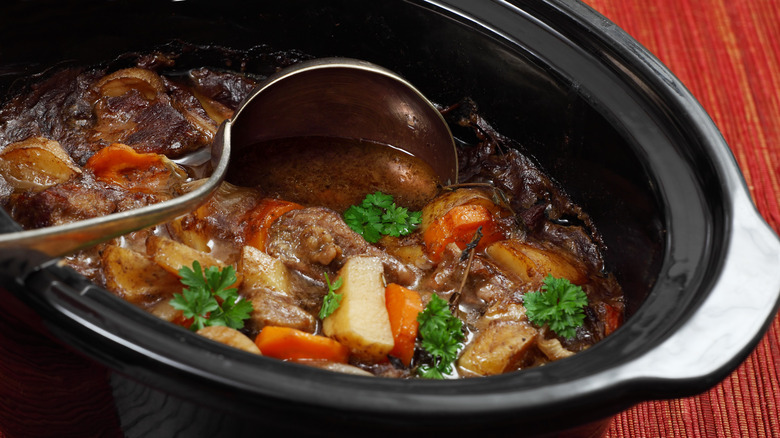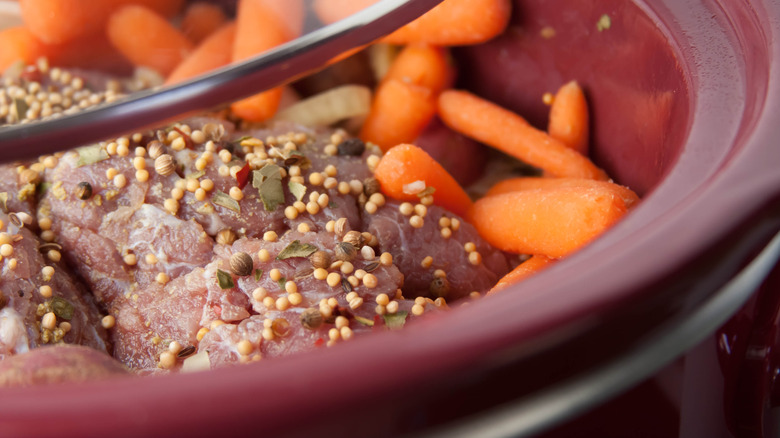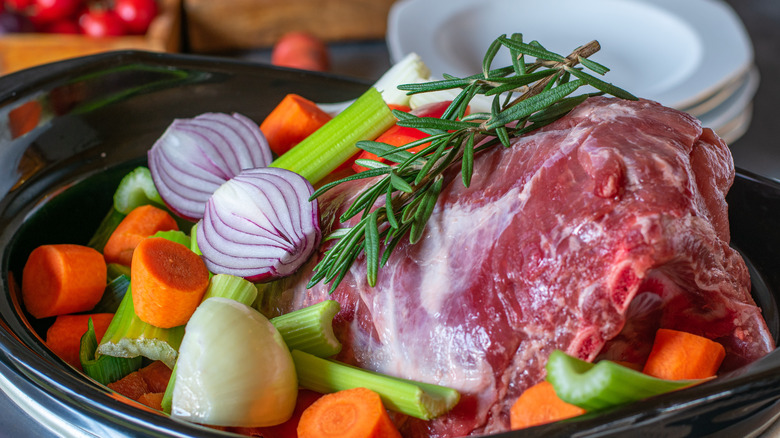Why You Should Never Overfill Your Slow Cooker With Liquid
It's Monday. You wake up in the morning and you know you are going to have a busy day. Wouldn't a nice, hot meal already cooked be great to come home to? This is when you are most thankful you have a slow cooker and a slew of great slow cooker recipes to ensure that you get to have that meal — without having to spend too much time in the kitchen when you get home.
Slow cookers, also known as crockpots, have become popular over the years because they are incredibly convenient to use, they can cook a wide range of dishes, and they make great (often healthy) meals in no time, with little effort on your part. Toss in your ingredients, add water or broth, throw in some seasonings, turn it on, and let the slow cooker do its thing. But if you aren't going to be near the crockpot to keep an eye on it, you need to be careful not to overfill — or underfill — the little appliance.
Overfilling does more than make a mess
When you are using your crockpot, you definitely want to add some moisture to the mix, or else your food will dry out or, worse, burn. However, you should not overfill your slow cooker with liquid because the liquid could overflow and potentially cause a fire. This is especially dangerous if you are not home when it happens. In an interview with Insider, slow-cooker cookbook author Marye Audet-White said that you should not fill the slow cooker more than ¾ of the way.
Slow cookers rely on a specific balance of liquid and food to cook properly, so if you overfill it with either, it can affect the cooking time and the final texture and flavor of your food. Excess liquid, in particular, can cause the food to become mushy or overcooked. If you want to get the perfect meal, and not a huge mess, you should follow both your recipe and the manufacturer's instructions when using your slow cooker.
Underfilling is just as bad
When it comes to slow cooker tips that everyone should know, add "underfilling is bad" to the list. Just like overfilling your crockpot with liquid, underfilling it can lead to bad results, too. Remember, many crockpot recipes need at least some liquid, or else the appliance can overheat, causing the food to burn or stick to the sides of the pot. Some recipes, though, don't call for the added liquid. If your recipe does, make sure that you are adding the proper food-to-liquid ratio to make the dish that you want
Whether you need to add liquid to your food or not, though, a crockpot should be filled at least half full with food to make sure that it cooks properly. If you aren't planning on making enough food to fill at least half of your slow cooker, you may want to consider buying a smaller crockpot or plan to cook more than you need for one meal and freeze the rest. This will be better for your crockpot in the long run.


